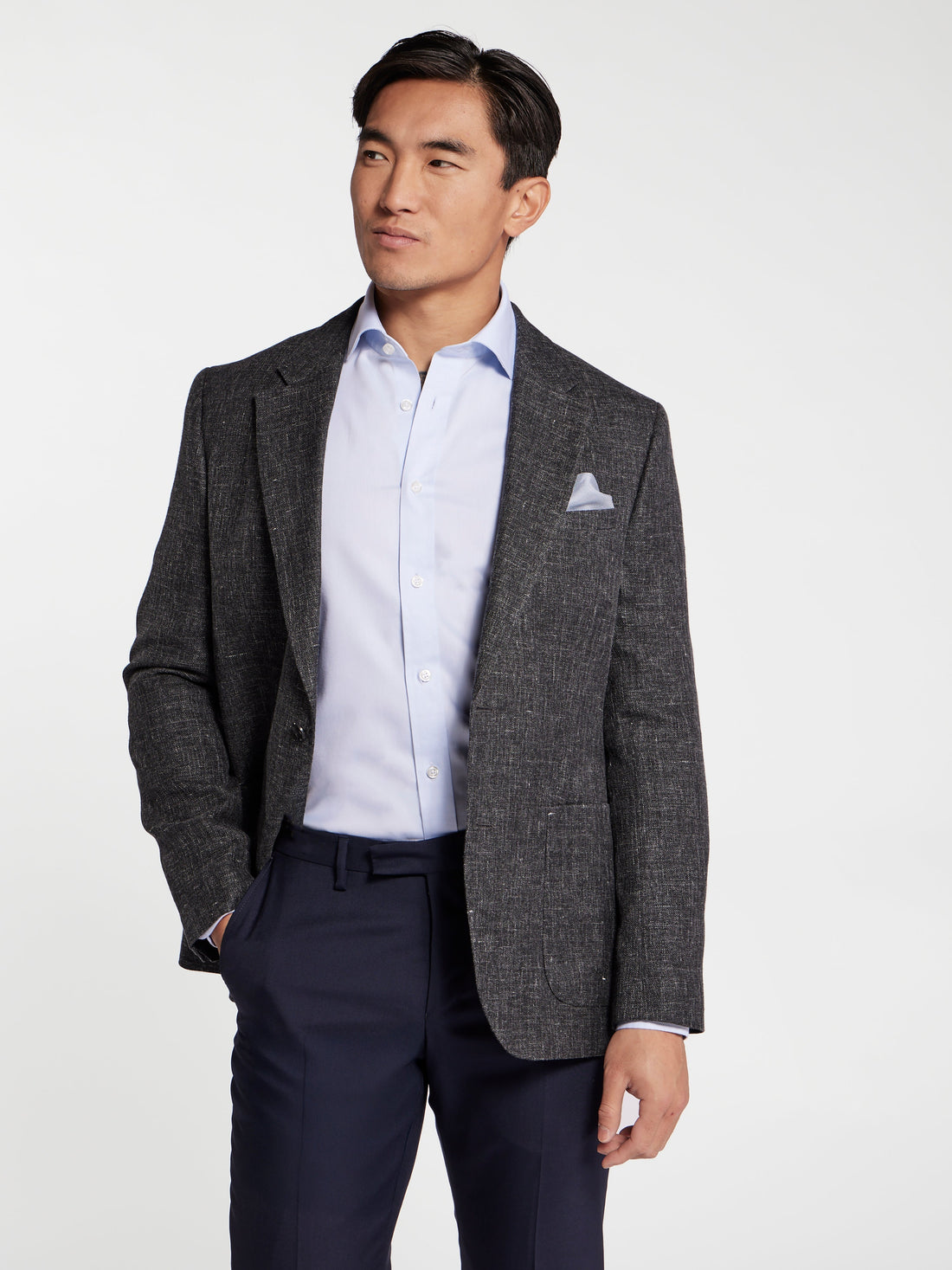
The Business Casual Style Guide
What Is Business Casual for Men?
“Business casual” might be one of the most misunderstood phrases in modern style. Too many men assume it means “anything goes.” It doesn’t. Think of it as a balance between boardroom polish and everyday ease: refined, but relaxed.
The concept first emerged in the 1990s, when tech companies ditched the tie but kept the tailoring. Since then, it’s evolved into a timeless way to dress with confidence, comfort, and credibility.
At T.M. Lewin, we define business casual as the balance between tailored precision and relaxed confidence.
In practice? Swap your full suit for separates. Replace the tie with texture. And always, always make sure your shirt is pressed.
Working from home? Read our Hybrid Workwear Guide

The Core Elements of a Business Casual Outfit
Business casual isn’t one outfit, it’s a formula. Master the right mix of shirts, trousers, layers, and accessories, and you’ll never be underdressed or overdressed again.
1. The Shirt: Your Foundation
No matter the industry, the shirt is where it all starts. The key is to look polished without the formality of a full suit shirt.
What to wear:
-
Oxford shirts for structure and texture
-
Non-iron shirts for all-day sharpness
-
Poplin shirts for cleaner, sleeker lines
Stick to versatile colours: white, pale blue, or soft stripes. Patterns work too — just keep them subtle.
Shop: Non Iron Shirts | White Shirts
2. Trousers & Chinos: Relaxed but Refined
A well-cut chino or pair of tailored trousers hits the sweet spot between formality and ease. They pair as naturally with an Oxford shirt as they do a fine-gauge knit.
What to wear:
-
Chinos in navy, stone, or olive
-
Tailored trousers in wool or cotton blends
-
Avoid distressed denim, as it’s too casual
Shop: Chinos
3. Jackets & Blazers: The Smart Layer
The fastest way to elevate a business casual look? A great blazer. Go unstructured for flexibility, or textured for depth. We'd recommend flannel, or cotton-linen blends.
Styling tip: Ditch the tie and unbutton the top collar for relaxed confidence.
Shop: Blazers
4. Knitwear: Texture, Warmth, and Versatility
Layering is the backbone of business casual. A fine merino jumper over a shirt feels effortless, while a quarter-zip or cardigan works well in colder months.
Colour palette: charcoal, navy, camel, or burgundy are timeless tones that complement your shirts and jackets.
Shop: Knitwear
5. Shoes & Accessories: The Finishing Touches
Your footwear says more about you than you think. Trainers might fly on a Friday, but leather wins Monday to Thursday.
Essential options:
-
Derby or brogue shoes for formality
-
Loafers for relaxed polish
-
Minimal leather trainers for creative offices
Keep belts simple, socks subtle, and watches classic.
Shop: Accessories

Business Casual by Season
Spring / Summer
Warm weather doesn’t mean abandoning structure. Swap heavier fabrics for breathable ones: linen, seersucker, and cotton blends. Roll your sleeves and lighten your colour palette.
Essentials:
-
Unstructured blazers
-
Chinos in khaki or stone
Read how to dress for the office in the summer
Autumn / Winter
Layer intelligently. A crisp non-iron shirt under a merino jumper, topped with a tweed blazer or wool coat, balances warmth and sophistication.
Essentials:
-
Wool overcoat
-
Quarter-zip knitwear
-
Dark chinos or wool trousers
Shop: Coats

How to Build a Business Casual Capsule Wardrobe
Building a versatile business casual wardrobe is about investing in fewer, better pieces. Here’s the blueprint:
-
Brown brogues
-
Leather belt
-
Pocket square (optional flair)
With these eight pieces, you can create a week’s worth of outfits that all feel distinct.
Read about the Power of a Capsule Wardrobe

Common Business Casual Mistakes (and How to Avoid Them)
Even the best-dressed men make these errors:
-
Wearing trainers that belong in the gym.
Upgrade to minimal leather or suede loafers. -
Ignoring fit.
A perfect fit elevates even the simplest outfit. -
Overdoing patterns or colours.
Business casual thrives on restraint. -
Neglecting care.
Wrinkled shirts ruin the look. Invest in non-iron.
Small adjustments make a big difference.
Business Casual vs Smart Casual
Both codes occupy the middle ground between formal and relaxed — but they’re not identical.
| Business Casual | Smart Casual | |
|---|---|---|
| Setting | Office, meetings, events | Social, evenings, dates |
| Shirts | Collared (Oxford, non-iron) | Polos, knits, linen |
| Trousers | Chinos, tailored trousers | Chinos, dark jeans |
| Footwear | Leather shoes, loafers | Loafers, minimalist trainers |
Read about the key differences: Business Casual vs Smart Casual

How to Adapt Business Casual to Any Setting
Office / Hybrid Work:
Keep it simple — crisp shirt, chinos, merino knit. Add a blazer for meetings.
Client Meetings:
Dial up structure: tailored trousers, polished shoes, pocket square.
Business Travel:
Non-iron shirts and stretch chinos make style effortless on the move.
After-Work Drinks:
Swap the blazer for a fine-gauge knit and loosen your top button for a professional yet relaxed look.

In Summary: Dress Smart, Feel Comfortable, Stay Confident
Business casual is less about rules and more about refinement. It’s the modern man’s uniform; adaptable, effortless, and undeniably T.M. Lewin.
Because life isn’t perfect, but your shirt can be.
Explore the collections: Shirts | Suits | Blazers | Chinos
Read next: The Smart Casual Style Guide